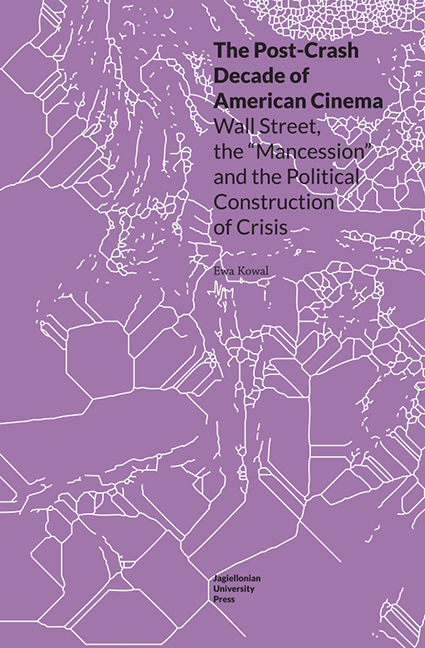 The Post-Crash Decade of American Cinema
The Post-Crash Decade of American Cinema Published online by Cambridge University Press: 05 May 2023
It would be impossible to begin this discussion of post-2008 financial crash cinematic depictions of Wall Street without going back to the 1980s and to an icon of that time, the now legendary character and “pop culture's most famous banker” (Bradshaw 2010), Gordon Gekko – the CEO of financial investment corporation Gekko & Co. Looking at Oliver Stone's 1987 film Wall Street (set in 1985, and written by Stanley Weiser and Oliver Stone himself) is also, of course, necessary for an analysis of the sequel created by Stone in direct response to the 2007/8 financial crisis (Stone [in:] Digital Spy 2010), Wall Street: Money Never Sleeps, written by Allan Loeb and Stephen Schiff. The latter is set in 2008 and was released in 2010. But Gekko immediately became a point of reference for any future film about Wall Street – in fact, for the actual post-1980s Wall Street itself, as well as part of any discussion about what happened during the 2007/8 financial crisis and why. This is because Gekko embodies the new Wall Street “culture” which emerged from the political-economic changes which took place in the 1980s and which gradually contributed to the crisis that occurred almost thirty years later.
As we learn from Charles Ferguson's Oscar-winning documentary Inside Job (2010):
After the Great Depression, the United States had forty years of economic growth without a single financial crisis. The financial industry was tightly regulated. Most regular banks were local businesses and they were prohibited from speculating with depositors’ savings. Investment banks which handled stock and bond trading were small private partnerships.
Crucially, according to Samuel Hayes, Professor Emeritus of Investment Banking at Harvard Business School, who is interviewed in the film: “In the traditional investment banking partnership model, the partners put the money up, and obviously the partners watched that money very carefully.” However, as Carmen M. Reinhart and Kenneth S. Rogoff write, “since the early 1970s, financial and international capital account liberalization – reduction and removal of barriers to investment inside and outside a country – have taken root worldwide. So, too, have banking crises” (2011: 206).
To save this book to your Kindle, first ensure [email protected] is added to your Approved Personal Document E-mail List under your Personal Document Settings on the Manage Your Content and Devices page of your Amazon account. Then enter the ‘name’ part of your Kindle email address below. Find out more about saving to your Kindle.
Note you can select to save to either the @free.kindle.com or @kindle.com variations. ‘@free.kindle.com’ emails are free but can only be saved to your device when it is connected to wi-fi. ‘@kindle.com’ emails can be delivered even when you are not connected to wi-fi, but note that service fees apply.
Find out more about the Kindle Personal Document Service.
To save content items to your account, please confirm that you agree to abide by our usage policies. If this is the first time you use this feature, you will be asked to authorise Cambridge Core to connect with your account. Find out more about saving content to Dropbox.
To save content items to your account, please confirm that you agree to abide by our usage policies. If this is the first time you use this feature, you will be asked to authorise Cambridge Core to connect with your account. Find out more about saving content to Google Drive.